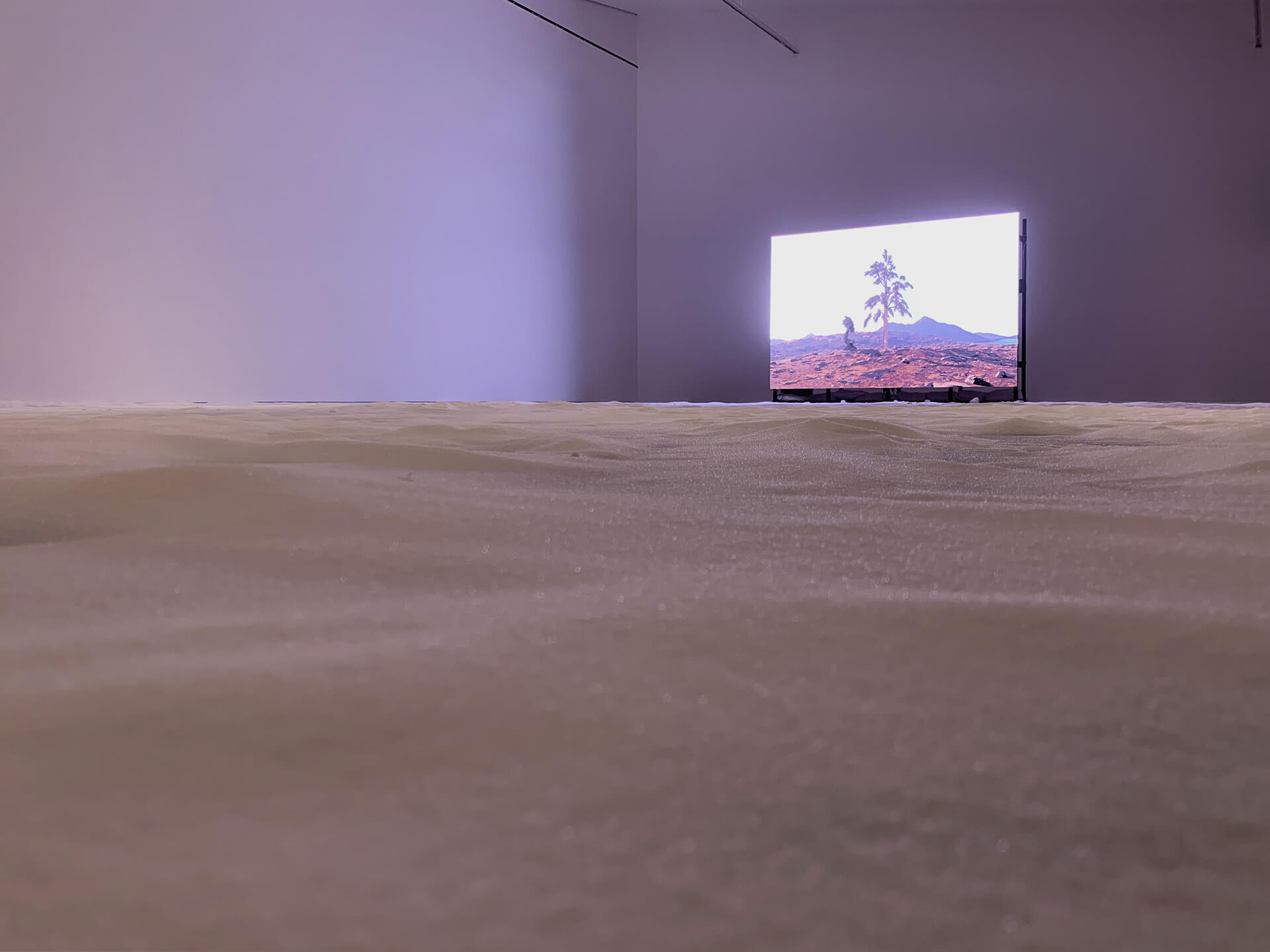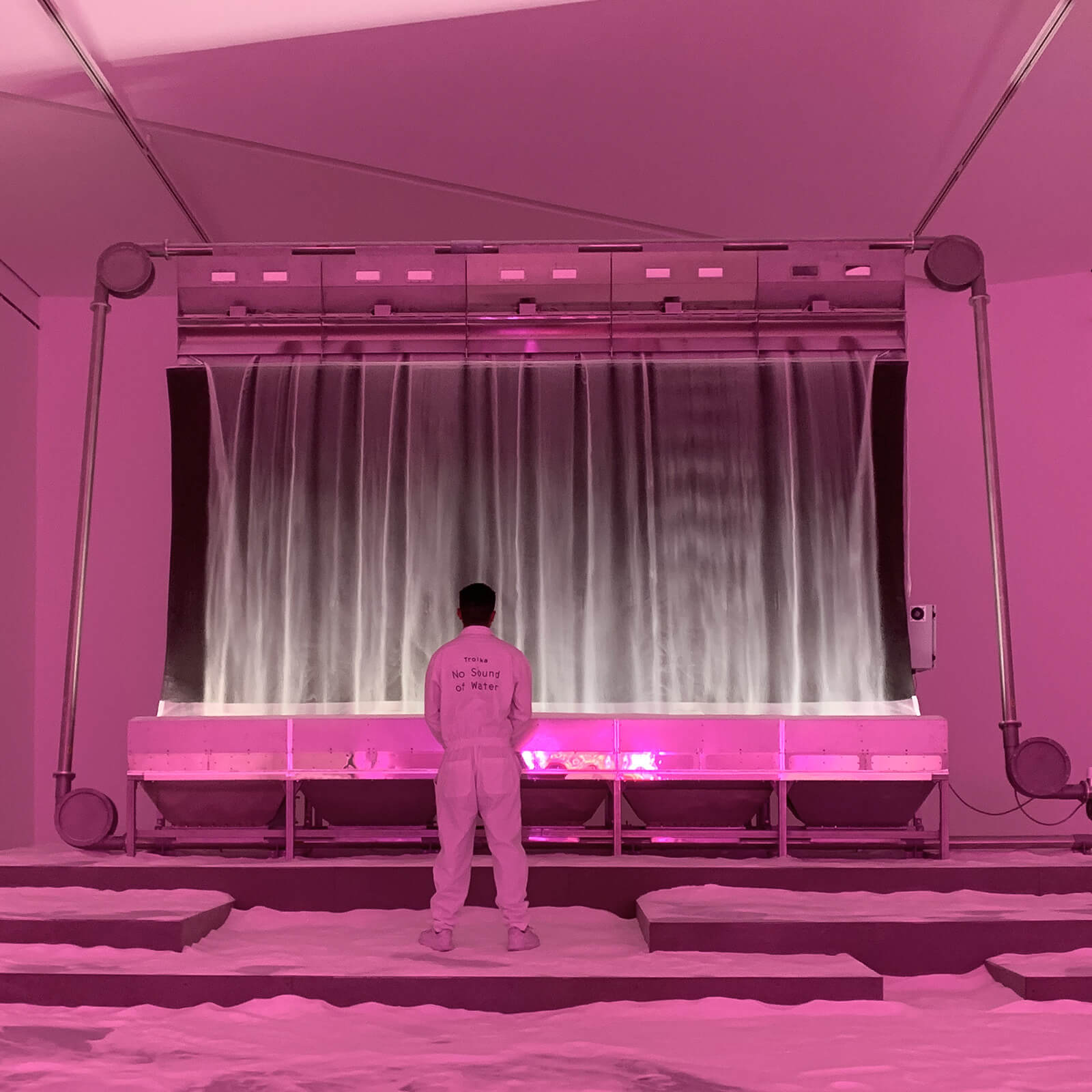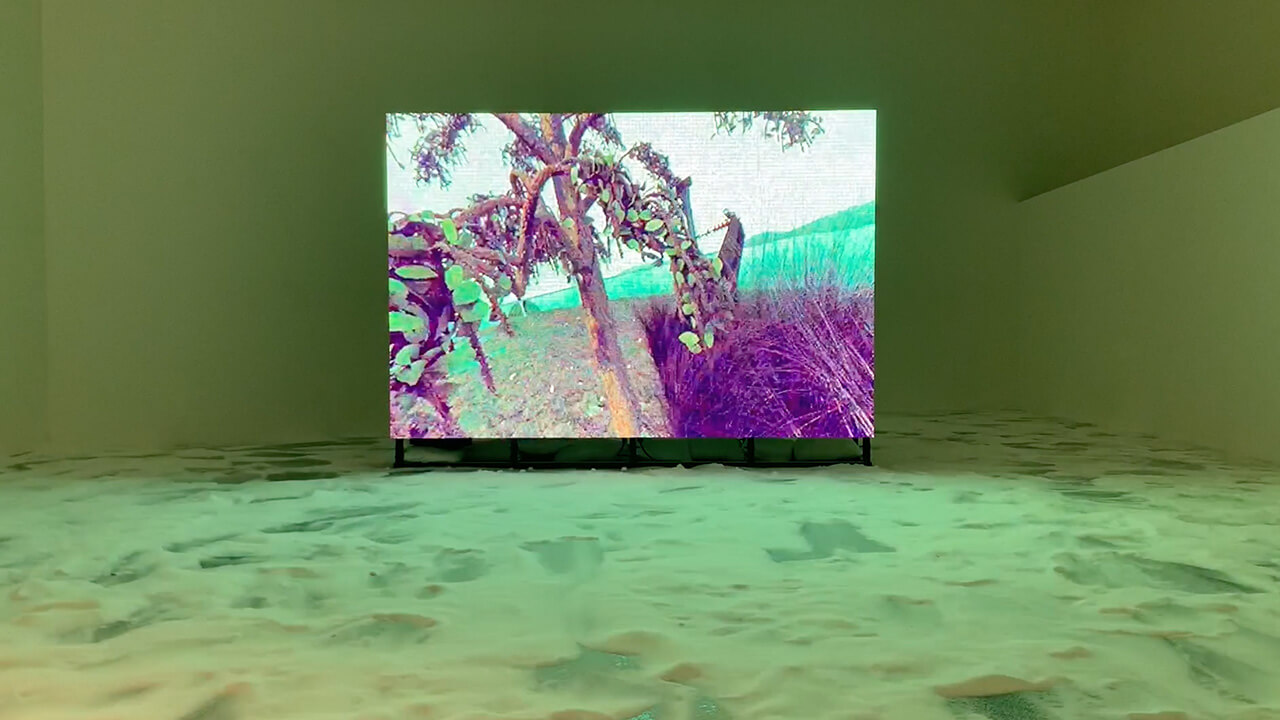The moment of hope and despair – a solo show by Anila Quayyum Agha
by Urvi KothariOct 08, 2022
•make your fridays matter with a well-read weekend
by Dilpreet BhullarPublished on : May 09, 2022
The abundance with which nature bestows its rich elements to lead a healthy life on earth in the hands of humans has turned into a state of inadequacy. The hegemony of algorithms, capitalism and technology to advance the human race had a detrimental effect on the natural environment around which it was going to retrace the journey of origin. The slant axis on which the earth found its balance is drifting due to mass loss in Greenland, glacial rebound, and mantle convection, as recounted by Global Climate Change, NASA. Gauging the rise of asymmetry in our natural habitat, the UK-based Troika, a collaborative contemporary art group formed in 2003 by Eva Rucki Conny Freyer and Sebastian Noel, is known for making installations at the intersection of technology and machinery with the mediums including light, electricity, and water, cajoling the audience not to mistake the conspicuous presence of nature and its gifts as a matter of permanency.
In an interview with STIR, Sebastian Noel expounds on the work by the collective, “…is informed by a great deal of preliminary research, encompassing both conceptual and philosophical considerations as well as more material, sculptural ones. In general, we believe that the rather critical situations our civilisations are faced with today stem from a rigid, singular belief that science and technology can and will save us. We witness the results of an outlook on the world, which has become crystallised as imminently materialistic, and where humans can instrumentalise at will, through technology, their natural surroundings.”
At the Arte Abierto gallery in Mexico, Troika presented its large scale installation No Sound of Water, commissioned by Arte Abierto Foundation, and Terminal Beach. The title of the art installation is a reference to the poem Wasteland by American-English poet, playwright, literary critic TS Eliot. The poem critiques the strains of the society struggling to survive the aftermaths of the First World War, the anxieties borne by the commoners under the burden of rising technology and industrialisation. The work transforms a living phenomenon, falling water, the symbol of life on Earth, into an extractive spectacle materialising the imposed, domesticated, and filigree aesthetic, “we prefer to be comfortable with, using fine salt as a principle for the negation of life.” The salt with the installation is underscored as the “agent of cultural evolution” – the key element for the survival of human civilisation.
No Sound of Water is part of an artistic and research project Untertage, which the collective has developed over the past 10 years. The German term untertage translates into English as ‘under the earth’ or to mention literally ‘under the day’. Untertage as a project tries to point at the ruptures in the edifice – be it environmental, political or societal - to suggest alternative ways of understanding our position within a living planet.

For the immersive installation, the collective, “started to look at our relationships with the minerals, and salts in particular,” mentions Noel, “only to retrace their material uses and symbolic values from the very beginning of mankind, around 3.3 million years ago.” The process to create the installation is about “unearthing or weaving an entangled network of research, ideas and observations. Weaving to condense information, bringing together what seems disparate, distilling affects and concepts into a final story.” It took five full-scale prototypes; countless discussions with powder processing engineers who informed about the implausibility of the exercise; hundreds of tests and pages of equations to have the No Sound of Water ready. “It distills both engineering considerations and artistic ones, as the final work is both machine and sculpture, each and every detail considered through both lenses,” explains Noel.

Via the upper channel, the structure of No Sound of Water works like a cascade of salt. Since the salt is omnipresent in the gallery space - settling on the floor, floating in the air, sticking onto the body - it extends, “an alternative reading in which this mineral is not only an element of human and natural extinction but, is also responsible for creating an era based on non-organic intelligence and synthetic biology.”
The installation replicates the mineral landscape to have the audience take a walk through the man-made extractive technologies. The vast terrain to be trodden to reach the saltfall is an experiential ‘journey’ punctuated by noise, smell and taste. On reaching closer to the cascade, the viewer is no more a silent observer but interacts with the multimedia installation. The machine used to continuously haul the salt from the ground to the top of the cascade was entirely developed and designed by Troika over three years. It has the potential to recirculate up to 30,000 kg of salt per hour. Directionally, this light installation is placed opposite of another machine, a large LED display half burrowed under the salt. The installations are in conversation in terms of both material and purpose: the saltfall achieves the motion of crystalline salt, and the LED made of salts works to illuminate the space of the installation.

The video Terminal Beach is shot in the middle of a deserted and penurious land dotted with the last tree on earth and a robotic arm. The scene highlights the automatic arm with an axe hitting the trunk of the tree. The severity of the situation is further accentuated by the sounds of lightning, solar winds and geomagnetic storms - all captured as radio waves by the British Antarctic Survey. The metaphorical meaning of the video is evident: capitalism, industrialisation and technology foreclose the possibility of making the environment sustainable. Othering the environment to produce a speculative habitat, in the hands of the technology-driven human race, has supplanted the neat encounter between patience, harmony and ecology.

The collective strives to introduce alternative, albeit plausible, understandings of our environment. Refraining to hold a didactic approach to the work, yet the collective is quite idealistic and optimistic to maintain, “The works would expose the viewers to some of the ideas we have developed. In the end, we hope this will be a space to conspire together, and hopefully inform a different attitude to our surroundings,” concludes Noel.
The exhibition No Sound of Water runs at Espacio Arte Abierto, México, until May 15, 2022.
by Maanav Jalan Oct 14, 2025
Nigerian modernism, a ‘suitcase project’ of Asian diasporic art and a Colomboscope exhibition give international context to the city’s biggest art week.
by Shaunak Mahbubani Oct 13, 2025
Collective practices and live acts shine in across, with, nearby convened by Ravi Agarwal, Adania Shibli and Bergen School of Architecture.
by Srishti Ojha Oct 10, 2025
Directed by Shashanka ‘Bob’ Chaturvedi with creative direction by Swati Bhattacharya, the short film models intergenerational conversations on sexuality, contraception and consent.
by Asian Paints Oct 08, 2025
Forty Kolkata taxis became travelling archives as Asian Paints celebrates four decades of Sharad Shamman through colour, craft and cultural memory.
 surprise me!
surprise me!
make your fridays matter
SUBSCRIBEEnter your details to sign in
Don’t have an account?
Sign upOr you can sign in with
a single account for all
STIR platforms
All your bookmarks will be available across all your devices.
Stay STIRred
Already have an account?
Sign inOr you can sign up with
Tap on things that interests you.
Select the Conversation Category you would like to watch
Please enter your details and click submit.
Enter the 6-digit code sent at
Verification link sent to check your inbox or spam folder to complete sign up process



by Dilpreet Bhullar | Published on : May 09, 2022
What do you think?